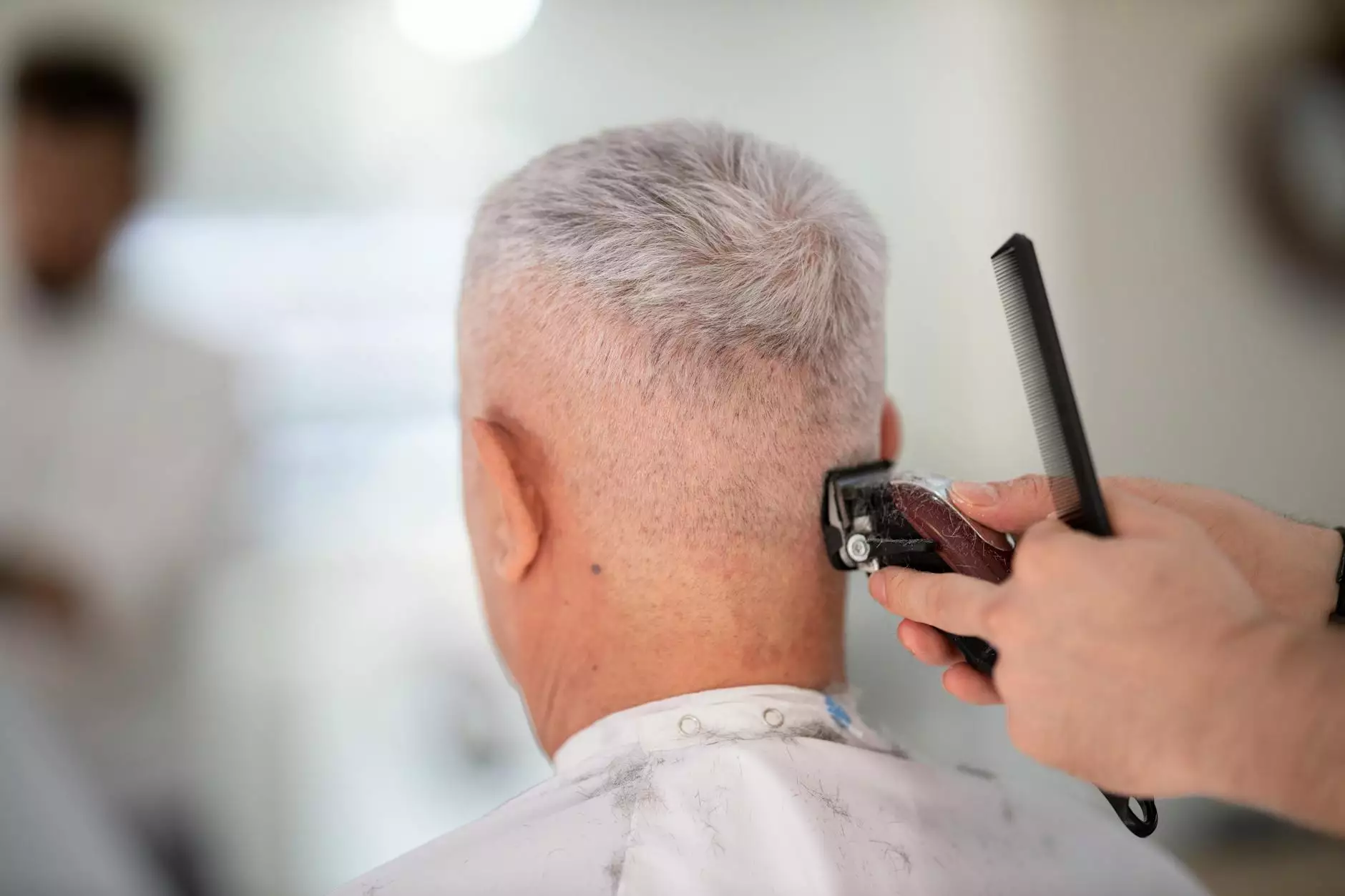Understanding Shoulder External Rotation Pain

Shoulder external rotation pain is a common discomfort experienced by many individuals. It can significantly impact daily activities and overall quality of life. In this extensive guide, we will delve into the causes, symptoms, treatments, and preventive measures associated with this condition. By the end of this article, you will have a deeper understanding of how to manage and alleviate pain associated with external rotation of the shoulder joint.
What is Shoulder External Rotation Pain?
Shoulder external rotation pain refers to discomfort that occurs when the shoulder is rotated outward. This motion is crucial for several daily activities and sports. The shoulder joint is one of the most mobile joints in the body, allowing a wide range of motion. Unfortunately, this mobility also makes it prone to injuries and conditions that can cause pain. Understanding the mechanics of the shoulder and the specific movements involved in external rotation is essential to comprehending this type of pain.
The Anatomy of the Shoulder Joint
The shoulder joint comprises three bones: the humerus (upper arm bone), the scapula (shoulder blade), and the clavicle (collarbone). Several muscles, tendons, and ligaments surround these bones, providing stability and facilitating movement. The key players in shoulder external rotation include:
- Rotator Cuff Muscles: These muscles stabilize the shoulder and allow for smooth movements.
- Infraspinatus: One of the rotator cuff muscles that is primarily responsible for external rotation.
- Teres Minor: Another rotator cuff muscle assisting in external rotation and lateral movement.
Causes of Shoulder External Rotation Pain
Shoulder external rotation pain can stem from various factors, including injuries, overuse, and underlying medical conditions. Understanding these causes is vital for effective treatment and management. Here are some common causes:
- Rotator Cuff Injuries: Tears or strains in the rotator cuff muscles can lead to significant pain during external rotation.
- Shoulder Impingement Syndrome: This condition occurs when the tendons of the rotator cuff become inflamed and irritated during shoulder movements.
- Labral Tears: The labrum is a cartilage structure that deepens the shoulder socket. Tears can lead to pain and instability.
- Arthritis: Osteoarthritis or rheumatoid arthritis in the shoulder can cause stiffness and pain in the joint.
- Repetitive Use Injuries: Overhead activities such as swimming, tennis, or painting can cause wear and tear on the shoulder structures.
- Frozen Shoulder: Also known as adhesive capsulitis, this condition restricts shoulder movement and can manifest as pain during external rotation.
Symptoms Associated with Shoulder External Rotation Pain
The symptoms of shoulder external rotation pain can vary based on the underlying cause. Common symptoms include:
- Pain: Typically experienced on the outside of the shoulder, particularly when rotating the arm.
- Stiffness: Limited range of motion in the shoulder joint, making certain activities difficult.
- Weakness: Difficulty lifting or moving the arm overhead due to muscle weakness.
- Swelling: Inflammation around the shoulder joint due to injury or irritation.
- Clicking or Popping Sounds: These noises may occur when moving the shoulder in particular positions.
Diagnosis of Shoulder External Rotation Pain
If you experience persistent shoulder external rotation pain, it is essential to seek a professional diagnosis. A healthcare provider will often employ several methods, including:
- Physical Examination: The doctor will assess strength, range of motion, and the location of the pain.
- Medical History: Discussing previous injuries or underlying conditions may provide insight into the current issue.
- Imaging Tests: X-rays, MRI, or ultrasound may be ordered to visualize internal structures and identify potential damage or abnormalities.
Treatment Options for Shoulder External Rotation Pain
Treatment of shoulder external rotation pain depends largely on the underlying cause and severity of the condition. Here are some common treatment options:
1. Rest and Activity Modification
Sometimes, simply resting the shoulder and avoiding activities that exacerbate the pain is crucial. Altering your routine can prevent further irritation and allow the healing process to begin.
2. Physical Therapy
Engaging in a structured physical therapy program can significantly aid in recovery. A physical therapist can provide targeted exercises to:
- Strengthen the rotator cuff muscles.
- Improve flexibility.
- Restore range of motion.
3. Medications
Over-the-counter anti-inflammatory medications, such as ibuprofen or naproxen, can relieve pain and reduce swelling. In some cases, prescription medications or corticosteroid injections may be required.
4. Ice and Heat Therapy
Applying ice packs to the shoulder can help reduce swelling and numb sharp pain. Conversely, heat therapy applied to the shoulder may improve blood flow and facilitate recovery.
5. Surgery
In severe cases of shoulder external rotation pain caused by significant injuries such as full rotator cuff tears or severe labral injuries, surgical intervention may be necessary. Common procedures include:
- Arthroscopic Surgery: Minimally invasive surgery to repair damaged structures.
- Rotator Cuff Repair: Surgical reconstruction of torn rotator cuff muscles.
Preventing Shoulder External Rotation Pain
While not all injuries are preventable, several strategies can help reduce the risk of experiencing shoulder external rotation pain:
- Proper Warm-Up: Always warm up before engaging in physical activities to prepare the muscles and joints.
- Strength Training: Include exercises that strengthen shoulder and back muscles to provide better support to the shoulder joint.
- Ergonomic Changes: Adjust your workspace and daily activity patterns to promote proper posture and mechanics.
- Adequate Recovery: Give your muscles time to recover after intense workouts to avoid overuse injuries.
When to Seek Professional Help
If you notice persistent symptoms of shoulder external rotation pain that do not improve with home treatment, it is crucial to consult a medical professional. Look out for signs such as:
- Severe pain that interferes with daily activities.
- Sudden swelling or bruising in the shoulder region.
- Fever or signs of infection.
- Loss of function or inability to move the shoulder properly.
Conclusion
In summary, shoulder external rotation pain can significantly impact your life, but understanding its causes, symptoms, and treatment options can empower you to take action. Always prioritize proper care and seek professional assistance when necessary. Promoting shoulder health through awareness and preventive measures can help you maintain an active, pain-free lifestyle. Remember that your shoulder health is critical not just for physical activities, but for sustaining overall well-being.
For more information regarding shoulder health, visit iaom-us.com.









